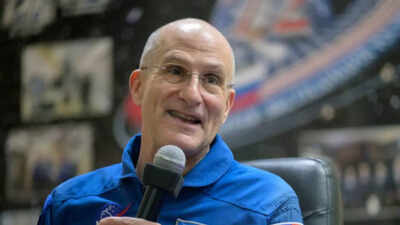New Model Suggests Slow Rotation of the Universe May Resolve Hubble Tension

The question of how fast the universe is expanding has puzzled astronomers for decades, especially since it appears that the expansion rate can differ based on the methods used to measure it. Recently, a novel mathematical model has emerged, proposing that a very slow rotation of the universe could potentially resolve what scientists refer to as the Hubble tension, a discrepancy that has intrigued researchers since Edwin Hubble's groundbreaking discoveries in the late 1920s.
In 1929, astronomer Edwin Hubble published a landmark paper that established the concept that the universe is expanding. This finding led to the formulation of the Hubble constant, a critical number that quantifies how fast this cosmic expansion occurs. However, as additional observations were made over the years, a puzzling situation arose: the expansion rate seemed to differ depending on the cosmic objects utilized for measurement, a phenomenon now known as the Hubble tension.
The recent research, published in March in the prestigious journal Monthly Notices of the Royal Astronomical Society, suggests that this conundrum may be addressed through the assumption that the universe is rotating very slowly. According to the new model, our universe completes one full rotation approximately every 500 billion years. This ultraslow rotation, the researchers argue, could explain the discrepancies observed in measuring the Hubble constant.
Istvn Szapudi, an astronomer at the Institute for Astronomy at the University of Hawai'i at Mnoa and co-author of the study, highlighted the complexities of the standard cosmological model, stating, The standard concordance cosmological model has some wrinkles. A slow rotation of the universe could solve the Hubble puzzle.
Astronomers typically measure the universe's rate of expansion using a couple of primary methods. One involves observing supernovasthe explosive endings of massive starsand calculating their rate of recession. Another method relies on studying the cosmic microwave background radiation, which dates back to just 380,000 years after the Big Bang. However, these two approaches yield results that can differ by as much as 10%, contributing to the ongoing debate about the universe's true expansion rate.
The notion of a rotating universe is not entirely new; it was first introduced by mathematician Kurt Gdel in a 1949 paper in the journal Reviews of Modern Physics. Esteemed physicist Stephen Hawking has also explored similar concepts. In the current study, the research team applied the idea of rotation specifically to the Hubble tension, suggesting that the rotation we observe in celestial objectssuch as planets, stars, galaxies, and even black holescould logically extend to the universe at large.
Szapudi noted, Much to our surprise, we found that our model with rotation resolves the paradox without contradicting current astronomical measurements. While the proposed rotation speed of the universe is far too slow to be detected directly, its existence could influence the universe's expansion rate without necessitating new physical theories.
However, it is important to note that the model only incorporates a fraction of the complex physics believed to be involved in cosmic expansion. As Szapudi explained, We use Newtonian physics with some input from General Relativity. A complete [General Relativity] treatment would be desirable. Furthermore, the studys assumptions include a uniform universe that does not vary in density as it evolves, which may not be entirely reflective of reality.
Moving forward, the research team is eager to conduct further investigations to contrast their rotating-universe model against other cosmological frameworks, seeking to deepen our understanding of the cosmos and resolve the enduring Hubble tension.




























